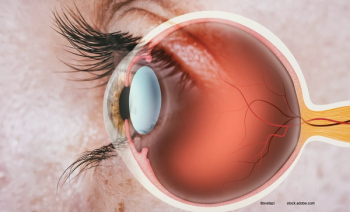
Carl D. Regillo, MD, and Jennifer I. Lim, MD, caution against the ophthalmic use of biosimilar products approved for systemic use. They also review how indications for biosimilars are granted upon approval.


Trinity team’s new gene therapy shows promise for treating eye condition affecting millions across the globe

Carl D. Regillo, MD, and Jennifer I. Lim, MD, caution against the ophthalmic use of biosimilar products approved for systemic use. They also review how indications for biosimilars are granted upon approval.

Carl D. Regillo, MD, and Jennifer I. Lim, MD, review clinical trial data for biosimilar products, with interpretation of safety data when comparing to the biologic reference products.

APOE4 gene associated with Alzheimer’s disease risk was found to protect mice from glaucoma. Research team also prevented retinal ganglion cell death by blocking the APOE signaling pathway, pointing to a potential treatment strategy for glaucoma.

According to Johns Hopkins Medicine researchers, as little as $65 per year appears to influence practitioners, making them up to twice as likely to prescribe the companies’ brand name eyedrops for glaucoma instead of cheaper generic versions.

Researchers at the Medical University of Vienna are focusing on how the retina can be used as a prognostic marker. Analyses revealed that retinal layer thinning as a result of an MS relapse predicts the severity of future relapses and the likelihood of disability.

Carl D. Regillo, MD, and Jennifer I. Lim, MD, discuss how evolving understanding regarding bioequivalence and the safety of biosimilars may lead to their wider use in the treatment of retinal disorders.

Carl D. Regillo, MD, and Jennifer I. Lim, MD, share historical perspective on the safety of biosimilars and their use in medicine.

The study provided evidence of safety, visual acuity improvement and structural stability in a difficult-to-treat patient population.

According to a news release, the U.S. Food and Drug Administration has approved Coherus’ ranibizumab-eqrn (Cimerli) as an interchangeable biosimilar for all five indications of Lucentis.

Kodiak Sciences Inc. announced that its BEACON Phase 3 study of tarcocimab, its novel antibody biopolymer conjugate, met the primary endpoint of non-inferior change from baseline in visual acuity at week 24 compared to aflibercept in patients with macular edema due to retinal vein occlusion.

The brain structures with most changes coincide with those which are altered most in Alzheimer’s, according to a study by researchers at the Universidad Complutense de Madrid in Spain.

Carl D. Regillo, MD, and Jennifer I. Lim, MD, review the regulatory oversight process regarding biosimilars after they have entered the market.

Carl D. Regillo, MD, and Jennifer I. Lim, MD, provide an overview of the development and clinical evaluation of biosimilar agents.

Retina indications for which ranibizumab-eqrn is interchangeable include neovascular (wet) age-related macular degeneration; macular edema following retinal vein occlusion; diabetic macular edema; diabetic retinopathy, and myopic choroidal neovascularization.

The discovery of molecular signatures of age-related macular degeneration will help with better diagnosis and treatment of this progressive eye disease.

The doctors will join the Cataract and Primary Eye Care, Glaucoma, and Retina Services.

Positive results from recent pre-clinical studies support the potential of long-acting PASylated nomacopan to advance toward IND/IMPD for clinical trials in geographic atrophy (GA) in dry age-related macular degeneration (dAMD), a disease with no approved treatments.

Nadia K. Waheed, MD, MPH, and David M. Brown, MD, discuss the future of intravitreal injections.

Expert ophthalmologists discuss absolute contraindications to intravitreal injections and how to manage patients with contraindications.


Treatment and reduces burden of care, providing a treatment option for patients diagnosed with diabetic macular edema.

According to the company, the study assesses the safety and tolerability of a single dose of CLS-AX administered to patients diagnosed with wet AMD by suprachoroidal injection.

According to the company, new imaging options presenting opportunity for better outcomes for patients.

A novel computational platform developed by researchers from the University of Pittsburgh School of Medicine identifies top-performing viral vectors that could deliver gene therapies to the retina with maximum efficiency and precision.

According to the company, 6-month safety and efficacy data are expected in Q1 2023. MCO-010 gene therapy reprograms healthy retinal cells to make them photosensitive.